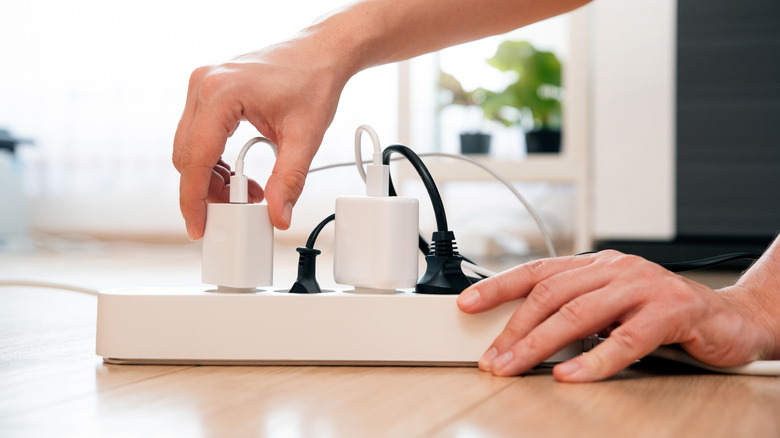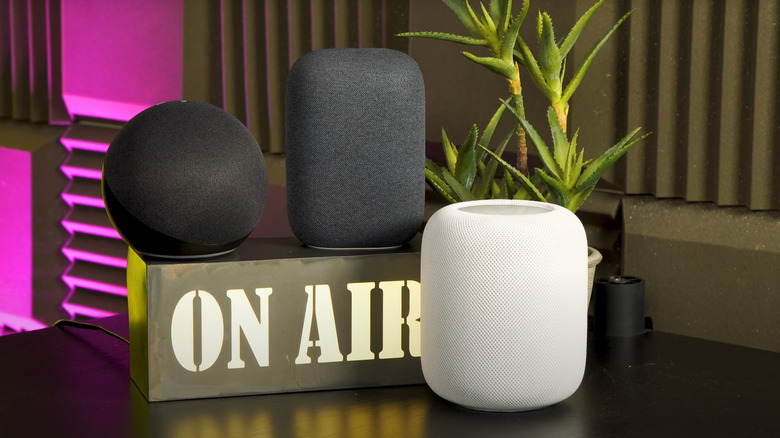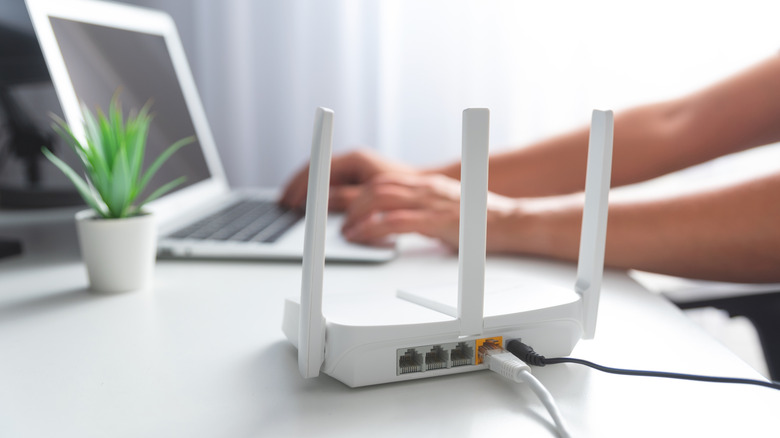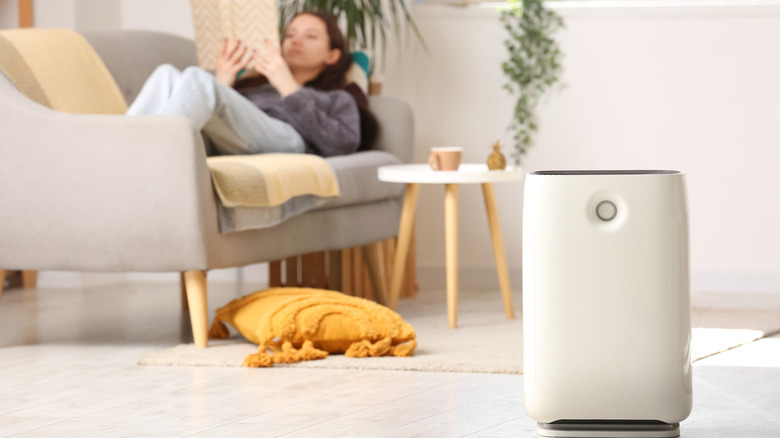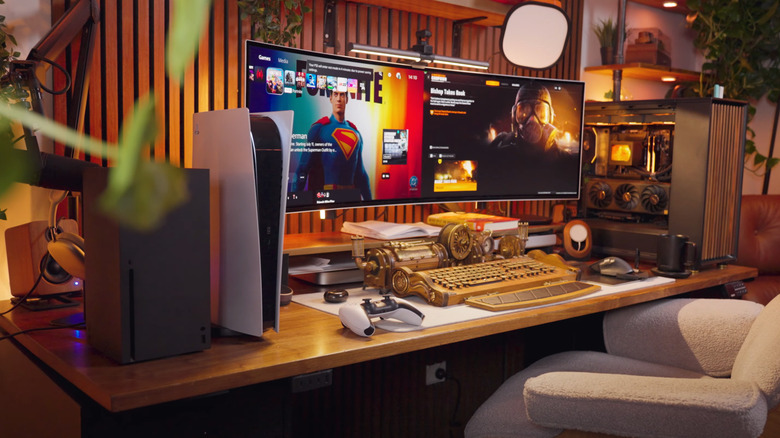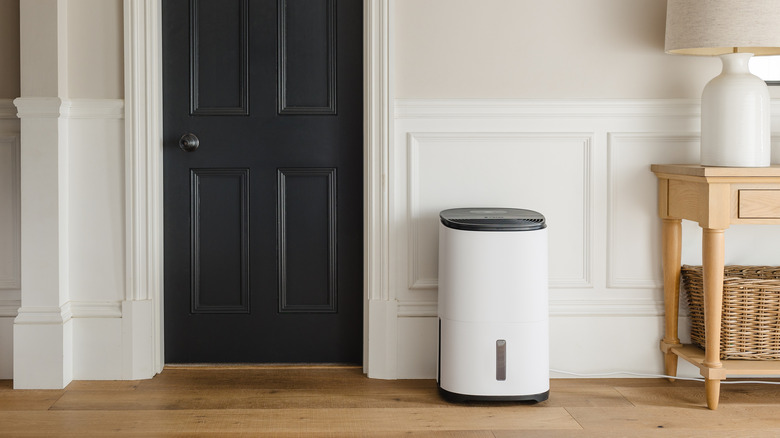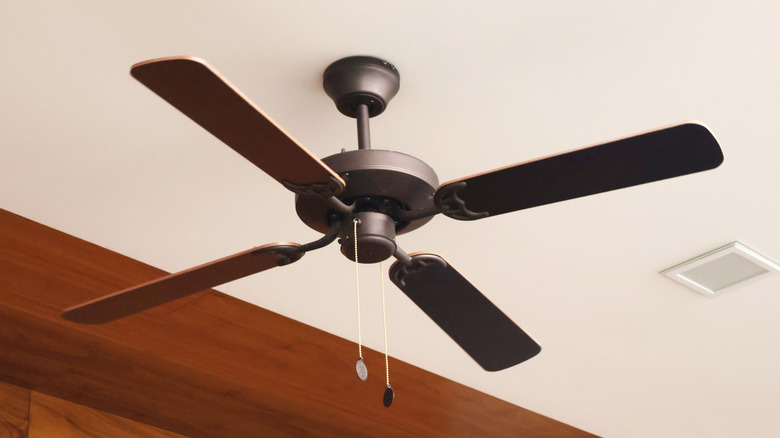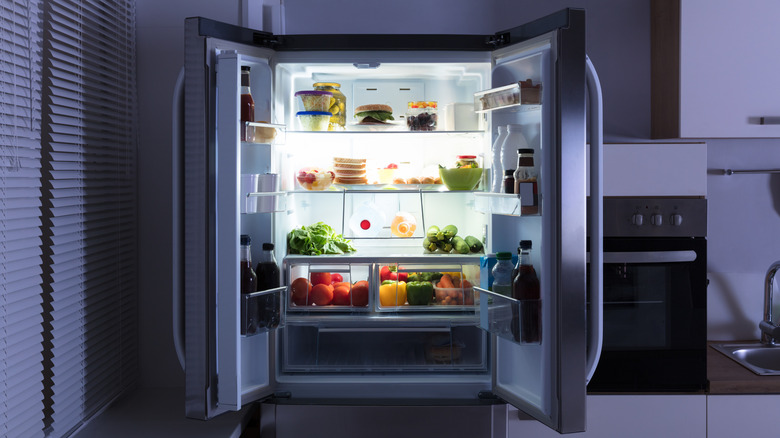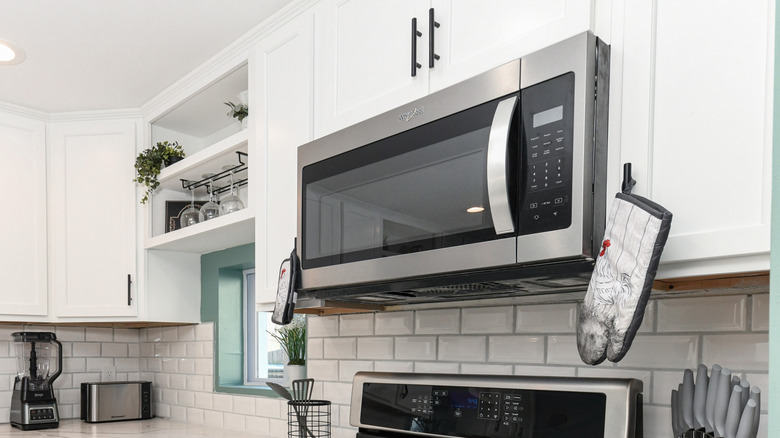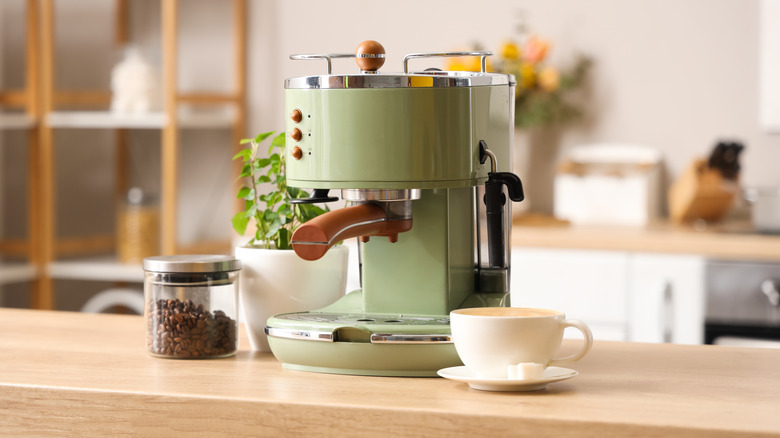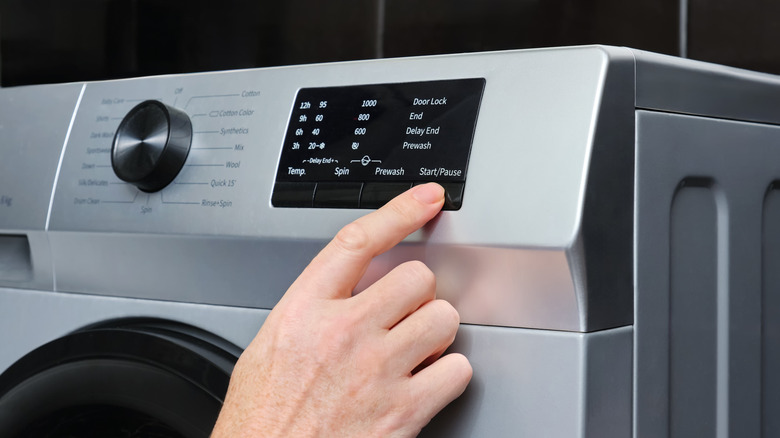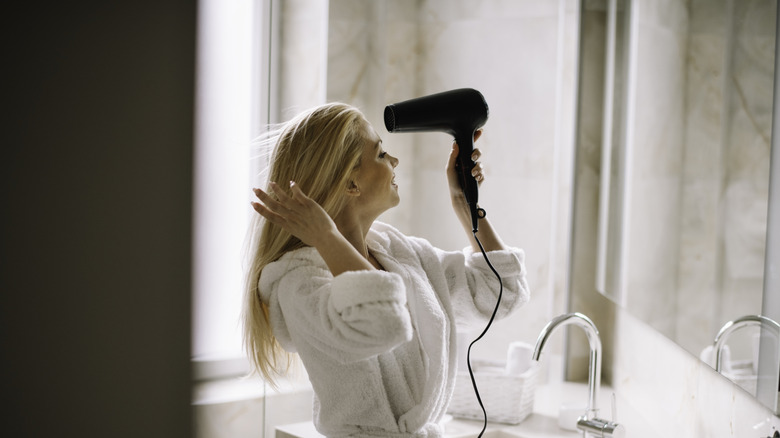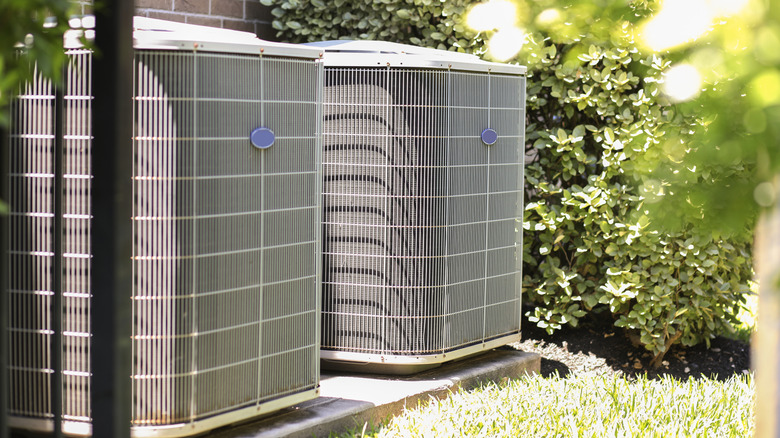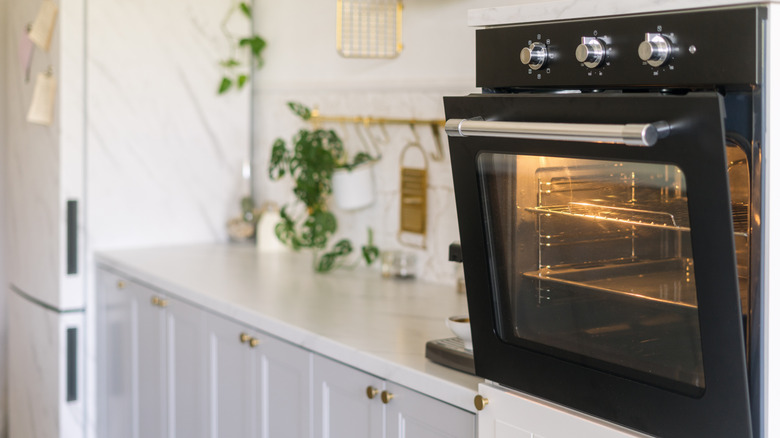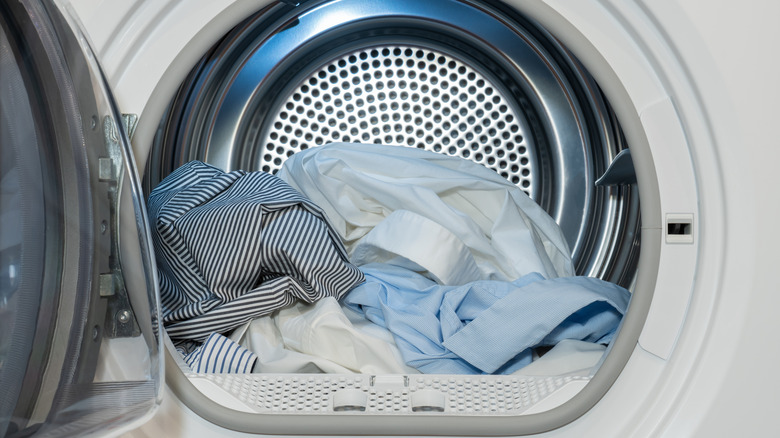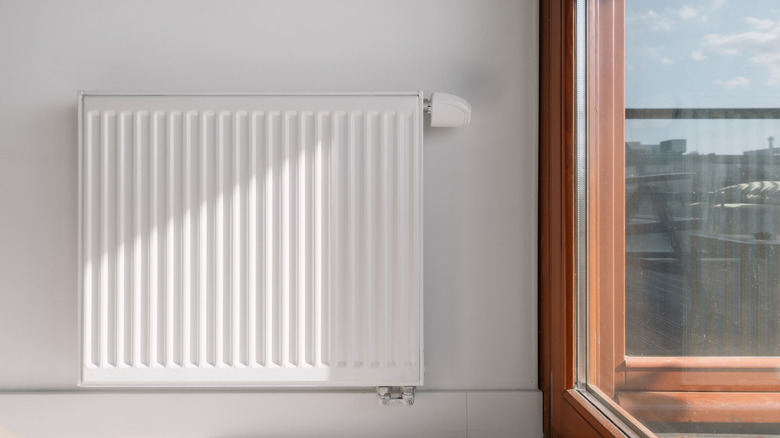Ranking 15 Home Appliances By How Much Energy They Use
We may receive a commission on purchases made from links.
Modern homes are outfitted with dozens of electronic devices and appliances, and the U.S. Energy Information Administration estimates that the average home consumes 899 kilowatt-hours per month. High energy use can be blamed on a wide range of appliances. However, a select few are responsible for the majority of a household's energy bill.
Below are 15 common home appliances that require electricity to operate. Some devices only use a few cents a month, while others can run into the hundred-dollar range if households aren't careful. We cover how much energy these appliances use on average, from the least watts to the most watts. You'll also find tips to reduce and improve your monthly energy usage. In most cases, Energy Star-certified devices are an option. This guarantees products have been tested and reviewed by a third-party. The tests vary by appliance type, but if a product passes and earns its certification, it's guaranteed to be one of the most energy-efficient of its kind.
You can find more details about how we compiled this list in our methodology. In the meantime, read on to learn more about these household appliances and your options for reducing their energy use. You'll see how greatly their wattage varies, how your usage matters, and the resulting impact on a household's electric bill.
Smart home assistants have a miniscule impact
Smart home devices are always alert and ready to serve, yet their overall energy usage is minimal. Amazon's Echo (Alexa) only uses about 2 to 4 watts while in standby mode. When actively used to broadcast podcasts or music and set to full volume, it only uses about 6.6 watts. This comes out to less than $0.40 per month in standby mode. In comparison, the Google Nest uses 1.4 Watts in standby mode and 13 watts when set to full volume. This is less than $0.15 for a month on standby.
These devices save energy in several ways. Amazon Echo automatically goes into a low-power mode, as long as it isn't connected to the Eero Built-in or anything via an auxiliary cable. It saves more energy by not activating, so keep the device out of loud rooms. Google Nest doesn't advertise low power modes, but one of its biggest selling points is its integration with thermostats. When connected to a thermostat, it learns how to most efficiently cool and heat your home, saving far more energy than it uses.
Wi-Fi router models don't use much energy
Don't worry about a Wi-Fi router using too much energy while you're asleep or out of the house. Routers only use about 5 to 20 watts. If left on without interruption, they typically cost under $2 per month.
Energy-saving measures have a minimal impact, such as placing it in a ventilated location or disabling additional networks. Your best bet for reducing your router's electricity use is to purchase a modern, energy-efficient model. You can also reduce the energy used by unplugging the device when not in use. Keep in mind, this is inconvenient, as you'll need to plug in your internet and let it boot up before using Wi-Fi-connected devices.
Air purifiers are on the lower end of energy usage
There are plenty of air purifier appliances that won't break the bank. Air purifiers use between 30 and 100 watts of power to run. So, running this device 24 hours a day costs between $2 and $10 per month.
The first step in reducing this consumption and costs is purchasing an Energy Star-Certified model, like Kenmore's Air Purifier with HEPA Filter. Keep your air purifier costs low by using the available settings strategically. If your device has timers, use them to only run the purifier for a few hours at a time. You can also lower the fan speed or set it on "night mode" if that's an option. Set up the purifier in the center of your room, instead of in a corner or pressed against furniture, which can impede the fan's pull. Also, change the filters as needed, since trapped dirt slows airflow and makes the device work harder.
Gaming devices greatly vary in energy use
Staying in on the weekends to play video games can save money, especially if you use energy-conscious devices. All consoles and gaming PCs aren't created equal. The new PlayStation 5 and the Xbox Series X use up to 220 watts, and the Nintendo Switch 2 can use as little as 8 watts. These numbers vary depending on the game being played, and it doesn't account for the attached TV screen or speakers. A desktop gaming PC puts all three of these popular consoles to shame, and powers on 200 to 500 watts. This doesn't account for the monitor, speaker, or external drives that may also be attached. So, factoring in the time played and the type of device being used, the cost of gaming can vary greatly.
The Nintendo Switch is the best gaming console if you're concerned about your energy use. However, you can optimize your setup to make the other options less energy-intensive. Set up a gaming PC with Energy Star-certified parts, and fine-tune the computer settings. There should be options for energy saving that will automatically dim your screen and put it to sleep as needed. Don't forget also to pick Energy Star-certified monitors, TVs, and speakers to further optimize a setup.
Humidifiers and dehumidifiers' energy use depends on the situation and models used
Humidifiers and dehumidifiers are must-haves in certain parts of the United States. Humidifiers add moisture to the air and require minimal power to operate. Dehumidifiers are the opposite, and require much more electricity to remove moisture from the air. Humidifiers use about 35 to 40 watts, whether they're a cool mist, warm mist, or ultrasonic model. Dehumidifiers blow these numbers out of the water, using 300 to 700 watts to run.
Cool mist and ultrasonic humidifiers tend to be more efficient. When it comes to dehumidifiers, larger devices tend to use more energy. In either case, the devices will be more energy efficient if they're Energy Star-certified. Dehumidifiers should be emptied and cleaned as needed, and humidifiers should also be refilled to prevent them from wasting energy while not dispersing any moisture.
Ceiling fans are very efficient, especially on low speeds
Ceiling fans are a great investment to lower energy bills during heat waves. They only need about 24 to 100 watts to run, especially if they're one of the top-rated energy-efficient fans for your home. The beauty of ceiling fans is that they aren't actually generating cold air. They spin and create artificial wind that makes people feel colder. It costs between $2 and $10 a month to keep fans on 24 hours a day.
To preserve energy, turn on ceiling fans when you're in the room, and switch them off when you aren't. Don't install a fan that's too large for your room so you don't end up overpaying for the power to cool a small room. Rooms up to 144 square feet only need a 42-inch fan, while rooms up to 225 square feet require a 44-inch fan. Be strategic and use the fans alongside your HVAC unit to maximize comfort and energy efficiency. According to the University of Florida, thermostats can be tuned up four degrees while running alongside a fan, and the room won't feel different.
Refrigerators use a lot of energy but cycle on and off throughout the day
Refrigerators and freezers make up a large portion of a household's total energy use. They cycle on and off during the day, but must maintain cold temperatures 24/7. On average, it takes about 300 to 800 watts to power refrigerators. This costs between about $12 and $28 per month, depending on the model, Energy Star status, and outside factors.
It's a myth that putting magnets on your home fridge raises energy bills, but you may be wasting energy in other ways. Don't set your refrigerator or freezer to ridiculously low temperatures. Around 35 to 38 degrees is sufficient for the fridge, and 0 degrees is perfect for freezers. Also, check that the seals aren't damaged on occasion, as this can let a lot of cool air leak out. Avoid opening and closing a refrigerator and freezer without purpose. This releases cold air, so refrigerators have to use more power to cool back down.
Microwave ovens use exorbitant amounts of energy, but for short periods
There are some things to know before buying a microwave for your home. They usually use anywhere between 600 and 1,700 watts, and larger models tend to use more. This may seem like an outrageous amount of energy, but microwaves only run for short periods. If you use a microwave for five minutes a day, it only comes out to about a dollar per month.
Even though microwaves don't use much energy, you can still take steps to keep your energy use low. Start by investing in a microwave with energy-saving features. For example, Toshiba's Countertop Microwave runs on 900 watts and has LED lighting. Abusing your microwave's power for extended periods multiple times a day jacks up electricity usage. So, use the correct power levels to avoid overcooking. Also, keep the microwave clean, so it doesn't waste energy heating leftover crumbs and spills.
Coffee makers and espresso machines use more energy than you may realize
A coffee maker is one of the home appliances people can't live without. Running up your electricity is a low price to pay for caffeine and morning motivation. The average coffee maker uses between 800 and 1,400 watts to brew, while espresso machines use between 1,300 and 1,500 watts. Once the coffee is brewed, machines use further energy to retain temperatures until they're switched off. The exact cost of running a coffee maker is hard to discern, since it greatly depends on how long you let your coffee stew. However, running a large coffee maker for a few hours every day is estimated to be around $10 per month.
Reduce your coffee maker or espresso machine's energy consumption by brewing only as much coffee as you need. Settle for a simple coffee maker, rather than a fancy one overloaded with features. Built-in grinders and milk frothers are luxurious additions, but they also increase the wattage. Don't forget to turn it off when you're done using it, as the warming plate can waste energy and be a fire risk if it overheats.
Washers with full loads and hot water use more energy
When comparing high-efficiency versus traditional washing machines at home, the former is the obvious choice for energy-conscious households. Clothes washers use about 350 to 500 watts, though their total energy impact depends on the size and frequency of laundry loads. This typically costs less than $1 a month, but this number can rise if you're running large, heavy loads or using an old and inefficient machine.
Reduce your washer's impact on the electricity bill by first investing in a modern washer that is designed for efficiency. Energy Star-certified washers use about 20% less energy and 30% less water, making them optimal in terms of both water and electricity use. In addition to having a modernized machine, reduce your environmental impact by running cold water cycles and using the appropriate settings for every load of laundry. Keep in mind that a vigorous spin cycle uses more energy upfront, but saves electricity during the next step: the dryer cycle.
Hair dryers are small (in size) but mighty energy guzzlers
Appliances don't have to be large to consume massive amounts of energy. Hair dryers seem inconsequential, but they drain between 1,200 and 1,875 watts while in use. Using these devices for 30 minutes every day comes out to about a dollar or two per month.
It's up to the user to control a hair dryer's energy consumption. Be more strategic when drying your hair. Dry it with a towel before you begin, and don't fry your hair to complete dryness. Leaving it mostly dry is healthier for your hair and cuts down electricity usage. Hold the dryer a few inches from your head so the propelled air hits more surface area and dries more efficiently. Picking a modern hair dryer model can also improve energy efficiency. Find one with lower heat settings and a "cool air" option, as both of these choices lower wattage and resulting costs.
HVAC systems use more energy in warmer states
One of the best ways to help reduce your energy costs at home is to be mindful of your air conditioner. HVAC units use anywhere from 1,000 to 4,000 watts. This number is already high on its own, but they also run throughout the day with occasional off-cycles. The exact cost varies depending on your climate, home size, HVAC model, and the overall condition of your house. It's also very dependent on what temperature you set it to. Overall, the average cost ranges from $30 to $270 per month.
The hotter your climate, the harder it is to cut your HVAC's energy use without sacrificing comfort. One recommendation is to change your filters every few months and invest in yearly maintenance. Also, ensure your home is properly sealed and outfitted with a smart thermostat.
Electric stoves and ovens use massive amounts of energy to cook food
The kitchen appliance that wastes the most energy is typically your oven. Electric stoves and ovens use about 2,000 watts on average. Preheating your oven and cooking food for about an hour a day costs around $8 a month. Of course, this number can rise if you're cooking at higher temperatures and for longer periods. Newer electric cooking models that are Energy Star-certified work with 18% higher efficiency, which saves considerable energy and money in the long run.
Even if you don't have an Energy Star-certified stove or oven, there are other ways to reduce electrical consumption. Cover pans and pots to trap heat and speed up the cooking process. If you have a toaster oven on hand, utilize this appliance for smaller portions of food. Toaster ovens only use around 1,225 watts since they're much smaller than full-size ovens.
Dryers use exorbitant amounts of energy while in use
Dryers are another unsurprising power hog in homes. They use between 2,000 and 6,000 watts, and running them for an hour a day costs between about $7 and $22 a month. Dryers can run up energy bills much faster than other home appliances. In fact, a University of Michigan study found that forgoing a dryer for line drying could save upwards of $2,100 over the course of the appliance's lifespan.
Aside from renouncing dryers completely, there are other ways to reduce their impact on local power grids. If you're shopping for a new model, keep an eye out for Energy Star-certified appliances. Use a high-speed spin cycle during the washing phase, so fabrics go into the dryer with as little moisture as possible. Clean out lint traps before or after every load, and be careful not to overstuff the dryer. It's more efficient to dry multiple loads back-to-back, so you're able to use the heat from previous cycles.
Electric heaters are by far the biggest consumers of energy in a household
Even though it's cheaper to run a central heater than a space heater, electric heaters are among the biggest consumers of energy in most households. Electric furnaces use between 10,000 and 50,000 watts, though they cycle on and off as they operate. This prevents them from utilizing their full wattage at all times, but they're still an expensive appliance to run. In fact, powering electric heaters costs around $1,000 throughout the winter.
Ultimately, your furnace usage will depend on your local climate and heater model, as newer devices may be more efficient and use less electricity. Help your heater work more efficiently by changing the filters as needed. Invest in a smart thermostat that auto-adjusts itself to use as little energy as possible to keep a home comfortable. You should also get yearly maintenance to keep your device running top-notch. Ensure doors and windows are properly sealed, so your home is insulated and retains the heat being generated.
Methodology: How we ranked home appliances by how much energy they use
We began our ranking of home appliances and energy usage by first compiling a list of the most common home appliances in the U.S. Even appliances for specific climates were included, such as dehumidifiers and humidifiers. We then determined the wattage of these devices while powered on and active, and sorted them by the appliances that use the least to most on average. For the most part, the wattage of devices while plugged in and in standby mode wasn't taken into account, seeing as the subsequent costs were so low. The only time standby mode was considered was for the smart home assistants.
